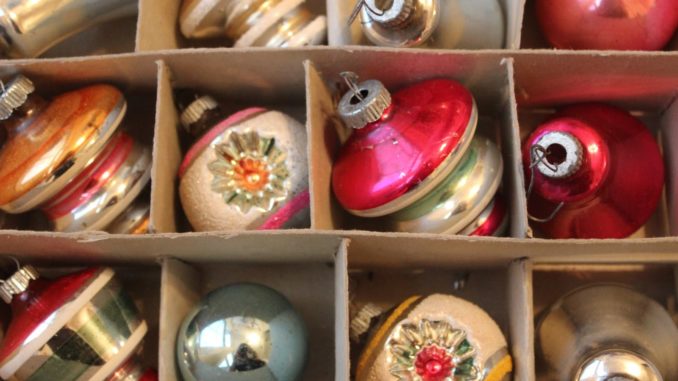
Original URL at CrackerJack BlogSpot
Source: Christmas Nostalgia
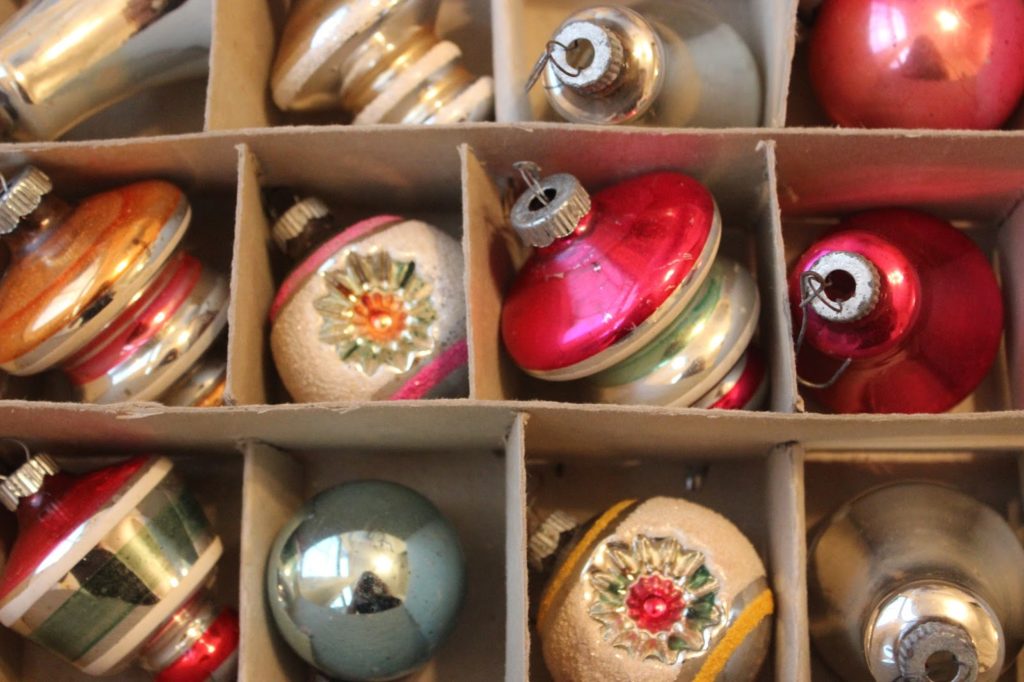
If you frequent antique or vintage shops, you’ve undoubtedly seen Shiny Brite ornaments, even if you have no idea of their name. They’re the colorful, often intricately painted glass ornaments, ranging from classic red to hot pink to candy-striped. They’re usually a bit expensive for someone (ahem, me) who’s used to thrift-store prices—maybe $20 to $30 a box—but I recently found a set of 12 in their original cardboard box for $4.50 at a charity shop.
I’ve always admired them, but now my curiosity is officially piqued: What’s the history behind these adorable little ornaments?
The Shiny Brite story begins after World War I with Max Eckardt, a German born in 1890.
Though Eckardt was from Oberlind, Germany—just 20 miles away from Lauscha, a hub for glass ornament makers—he first trained in the toy industry. In 1926, though, he officially entered the ornament business with his brother, Ersnt, opening a factory in Oberlind, where his relatives and employees hand-decorated the glass balls. His company also had an office in New York City at 1107 Broadway, which later became part of the International Toy Center. Max emigrated to NYC in the late 1920s.
With another war on the horizon, Eckardt feared the United States’ supply of German glass ornaments would be compromised, compelling him to found, in 1937, the Shiny Brite Company. The inspiration for the name is obvious: The insides of the ornaments were coated with silver nitrate so they would stay shiny, season after season.
To keep his company afloat, Eckardt sought the help of New York’s Corning Glass Company in 1937—with the promise that Woolworth’s would place a large order if Corning could modify its glass ribbon machine, which made light bulbs, to produce ornaments. The machine switchover was a success—molten glass was shaped into balls with the help of compressed air—and Woolworth’s ordered more than 235,000 ornaments; in December 1939, the first machine-made batch was shipped to Woolworth’s Five-and-Ten-Cent Stores, where they sold for two to ten cents apiece.
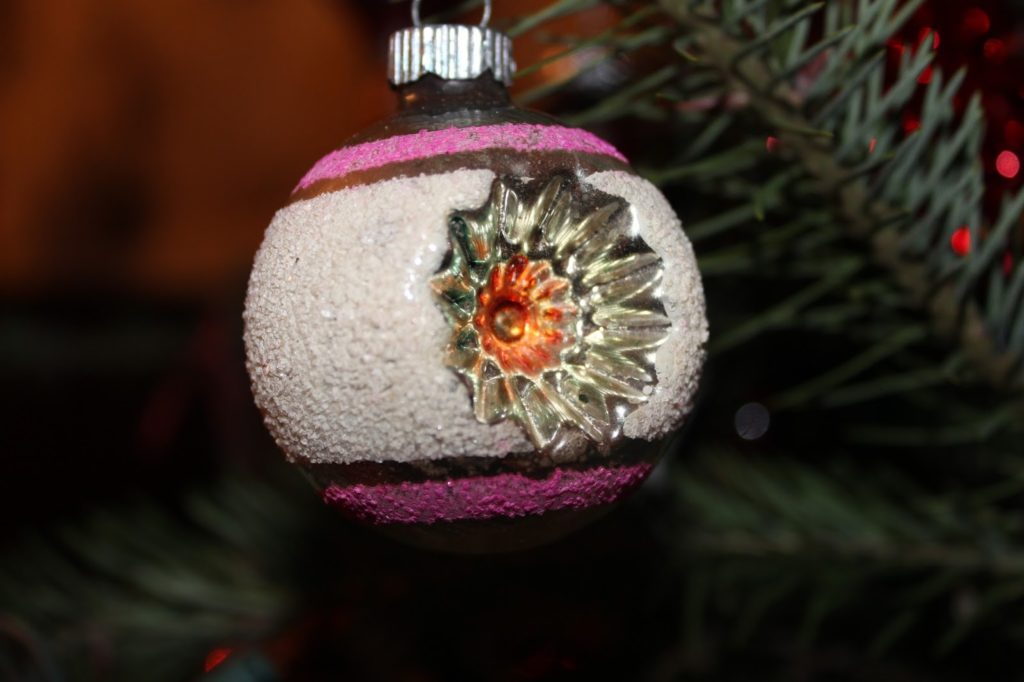
Eckardt’s fear proved prescient: Hitler’s rise to power, along with the British blockade, stopped the import of European ornaments to the U.S. in 1939.
By 1940, Corning was producing about 300,000 unadorned ornaments per day, sending the clear glass balls to outside artists, including those at Max Eckardt’s factory in New Jersey, for decoration. The ornaments were lined with silver nitrate, then run through a lacquer bath, decorated by Eckardt’s employees, and finally, packaged in brown cardboard boxes. At first, they were strictly silver, but eventually, Eckardt produced red, green, gold, pink, and blue ornaments. Corning also began offering a variety of shapes, including tops, bells, icicles, teardrops, trees, lanterns, and pinecones.
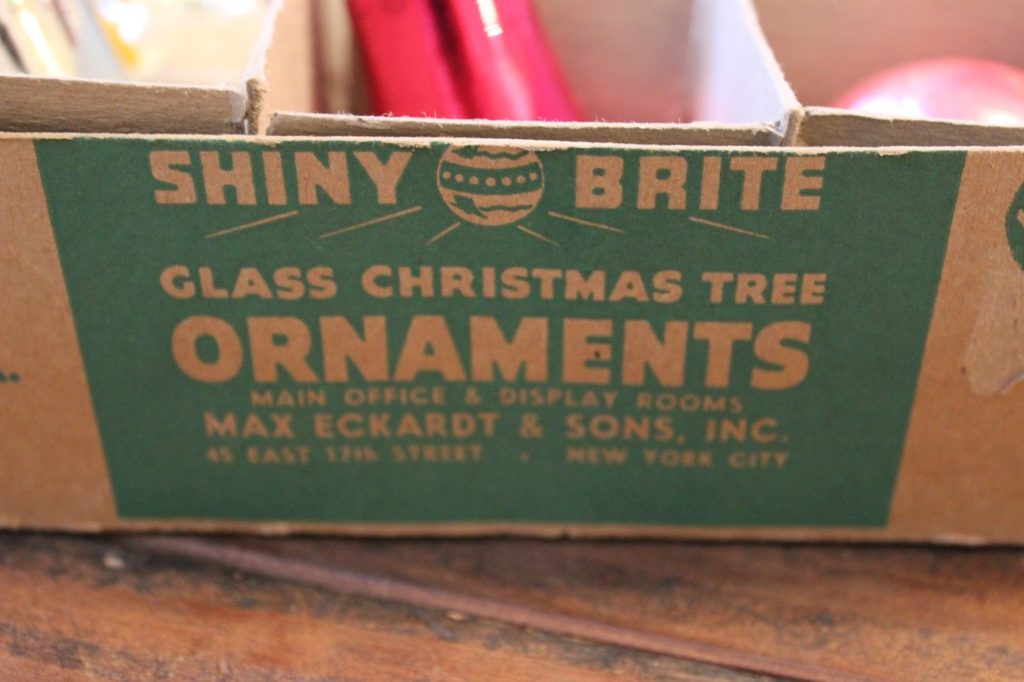
During World War II, however, the lacquer paint and silver lining became scarce, forcing Eckardt to make clear ornaments with thin, pastel stripes, which didn’t require as much pigment. The metal caps and hooks were replaced with cardboard and yarn. Some ornaments came with a tiny sprig of tinsel inside, but eventually, even this small amount of metal was prohibited during the war.
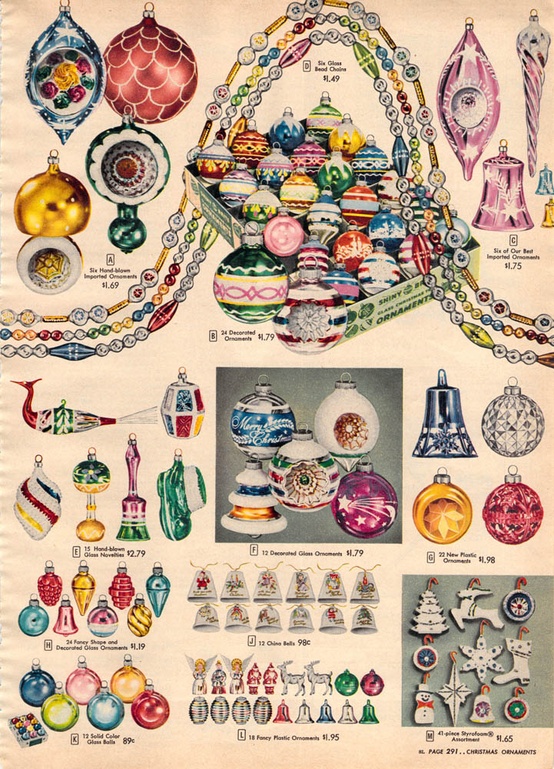
After the war, the crimped metal caps returned, with the addition of the words “Shiny Brite Made in U.S.A.” on the top. As part of the rebuilding effort, the U.S. government shipped Eckardt and his son, Harold, off to West Germany, hoping to breathe new life into the German glass ornament industry. There, they set up a factory in Wallenfells, which they named Lanissa, after Max’s three granddaughters (“L” for Lynne, “an” for Anne, and “issa” for Allison, whose nickname was Lissa).
Stateside, Corning continued to crank out Shiny Brite ornaments—by the 1950s, production reached a rate of 1,000 per minute. (Machines also now painted the ornaments.) The 1950s was the Shiny Brite heyday, with Eckardt operating four New Jersey factories to keep pace with the demand. In 1955, Thor, a Chicago washing machine manufacturer, purchased the company, which eventually produced about 75 percent of the ornaments sold worldwide.
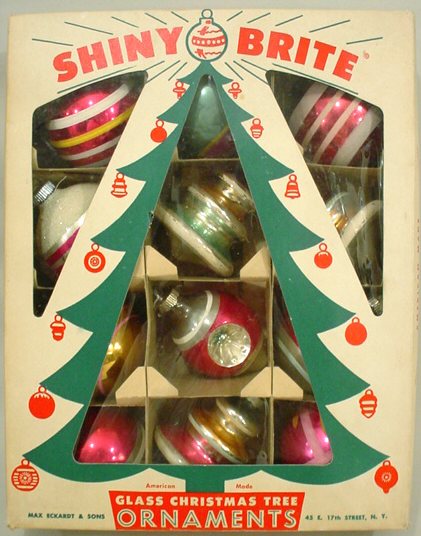
| Source: Christmas Nostalgia |
Eckardt died in late 1961, and shortly thereafter, Shiny Brite’s light began to fade, possibly due to the popularization of plastic. In the late 1990s, designer Christopher Radko revived the Shiny Brite name, and in 2001, began selling reproductions of the originals.

Be the first to comment